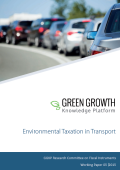Raw materials are essential for the global economy and future development depends on their continued supply. In general, their deposits in the Earth’s crust are also geographically clustered, making security of supply a potential risk. In many cases, the exhaustion of economically competitive minerals deposits in industrialized countries has made supplies increasingly dependent on the political stability of mineral-rich emerging economies. At the same time, increasing demand from these emerging markets, new technologies that require large amounts of rare minerals , low substitutability in applications and low rates of recycling have made economies more vulnerable to potential supply disruptions.

Rising energy demand and efforts to address climate change require a significant increase in low-carbon electricity generation. Yet, concern has been raised that rapid investment in some novel technologies could cause a new set of environmental problems.
This is a summary of the key findings of the International Resource Panel (IRP) report Green Energy Choices: The Benefits, Risks and Trade-Offs of Low-Carbon Technologies for Electricity Production which aims to support policy-makers in making choices about the technologies, infrastructures and energy sources. It does so through an analysis of the mainstream commercially available renewable and non-renewable power generation technologies3, analysing their GHG mitigation potential, but also tradeoffs in terms of: Environmental impacts (impacts on ecosystems, eutrophication and acidification, etc.) Human health impacts (particulates and toxicity) Resource use implications (iron, copper, aluminium, cement, energy, water and land).

Nowadays, sustainable development has been introduced and integrated into production and operation management field through the concept of the green supply chain. Green regulations and principles have gained the interest of managers and practitioners in selecting innovative practices for suppliers and organisations. Accordingly, the present study aims to evaluate the relationship between a green supplier, green innovation, environmental performance, and competitive advantage in the cement industry, which is an important industry for Iran. This study is descriptive in nature and conducted based on correlation and structural equation modelling. Managers and experts of cement companies in Fars Province are selected as samples for the study. A questionnaire and Smart-PLS software were used as research tools. The results of data analysis show that there is a positive and significant relationship between a green supplier, green innovations and environmental performance of an organisation, while there is a negative yet significant relationship between a green supplier, green innovations and environmental performance of an organisation.

